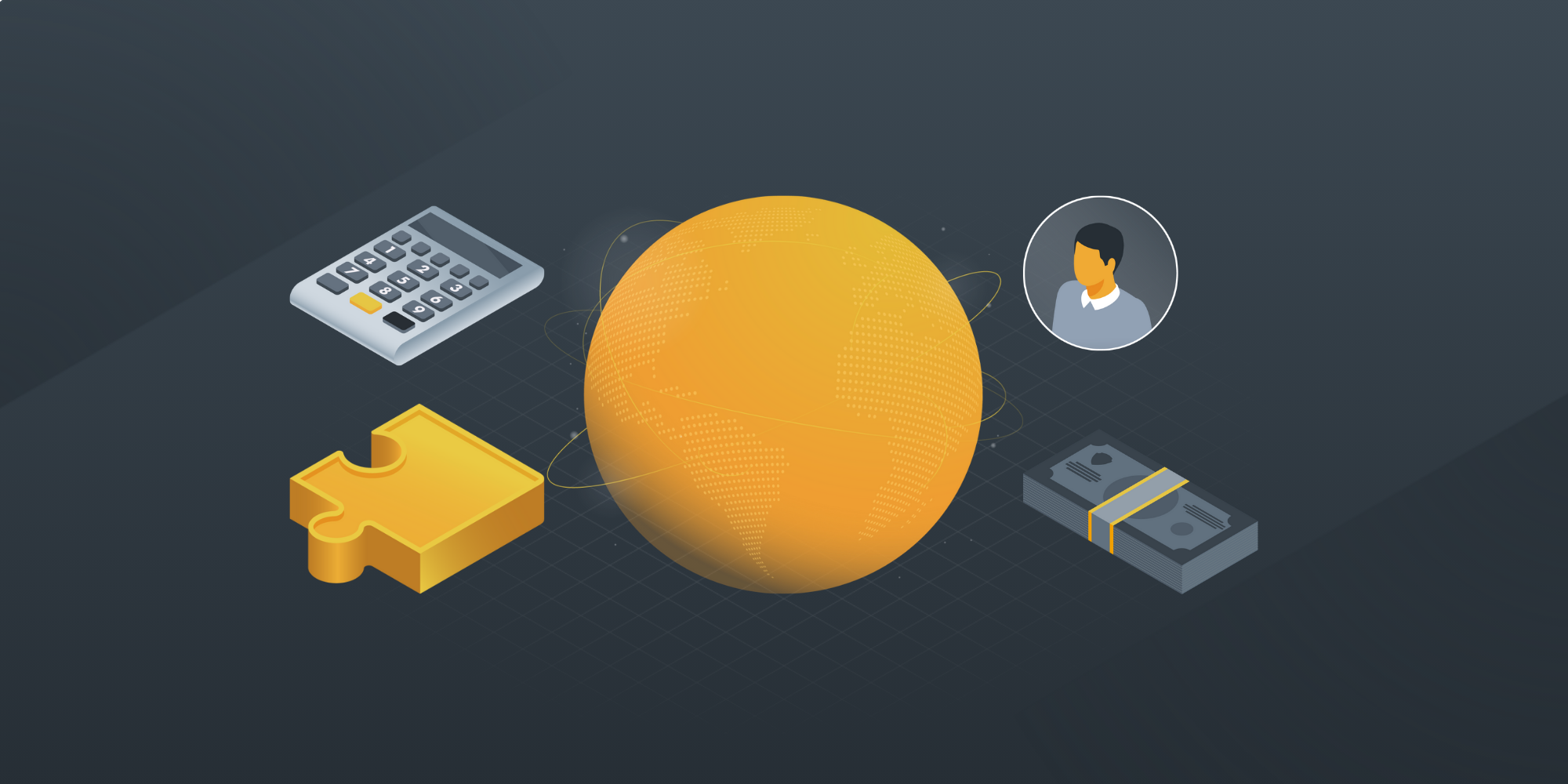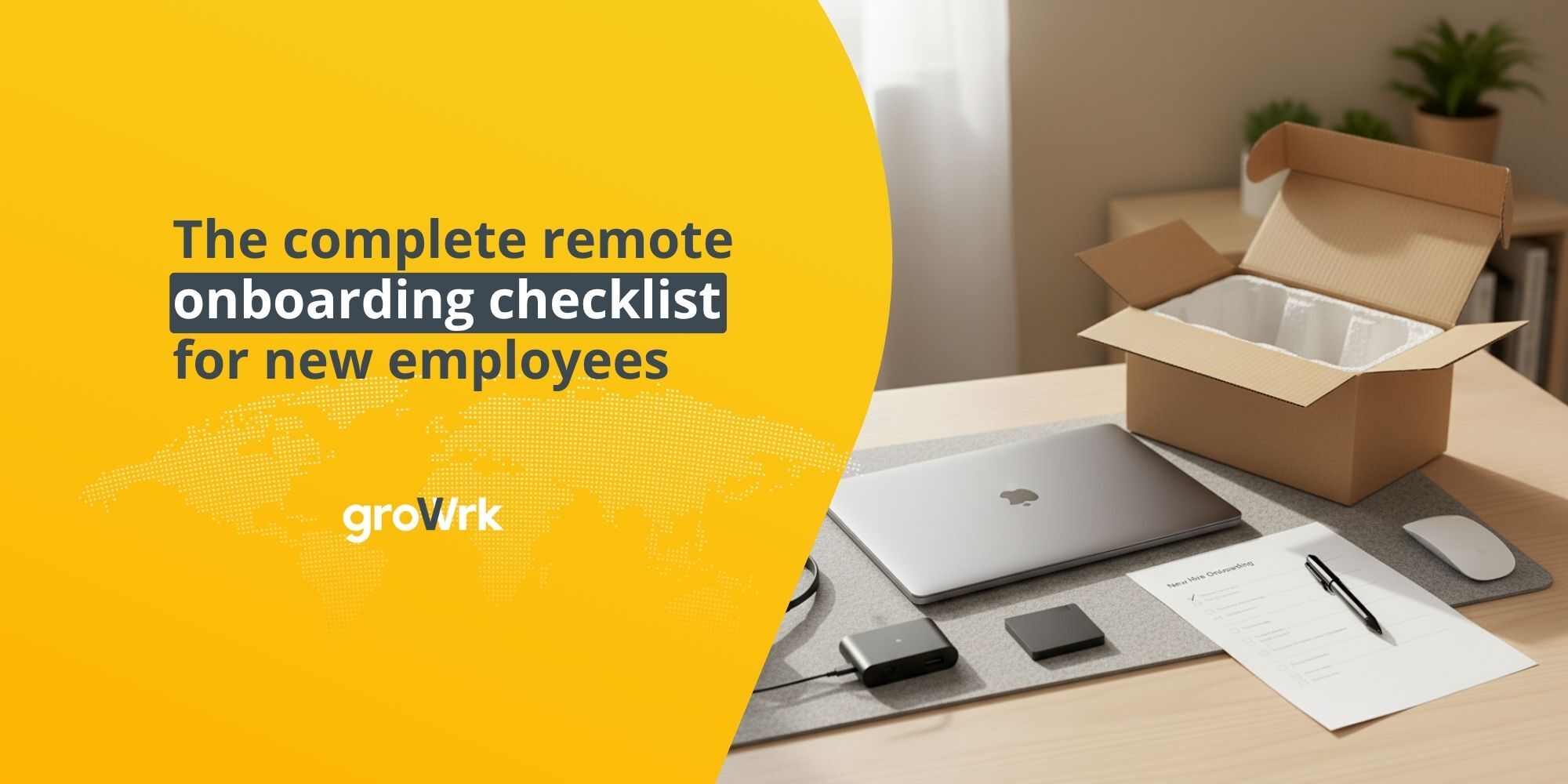How Remote Asset Management Saves Costs and Boosts Efficiency
 GroWrk Team
GroWrk Team
IT asset management becomes challenging for businesses when they grow and employees operate from different locations. Tracking everything manually becomes impossible, while the number of missing devices and software licenses grows out of control. For instance, our research from our report, The State of IT Lifecycle Management 2025, showed that 15% of organizations continue using spreadsheets for their asset management procedures. This results in excessive process complexity. To combat this issue, our report also found that IT professionals predict a 60% adoption rate of AI automation for tasks in 2025 while also planning to use AI for reporting (48%) and IT support (39%) functions.
Global organizations face these management difficulties to a higher degree. Different teams working in various time zones present a challenge because IT staff members cannot physically monitor operations in every location. Remote asset management serves as the solution to handle this situation. The software tracks IT assets while maintaining security and saving money for businesses.
What Is Remote IT Asset Management?

Remote IT asset management enables business organizations to monitor and supervise their global technology infrastructure efficiently. The system provides enhanced security and reduced costs for smooth operations by permitting IT staff to track and protect physical and digital assets.
- Global Supervision & Tracking: Serves as a worldwide platform that improves cost effectiveness and security measures.
- Comprehensive Asset Coverage: Provides full coverage for all assets which include computers, desks, mobile gadgets, software licenses, cloud storage, and security tools.
- Device Health & Security: Enables IT professionals to check device health while having complete control over device security and software updates and remote assistance.
- Business Continuity & Efficiency: Ensures continuous work tool accessibility for remote teams to reach maximum business productivity by combining automation with cloud-based solutions.
- Regulatory Compliance & Risk Mitigation: Helps organizations to fulfill industry requirements by preventing unauthorized data access and securing data through central monitoring functions.
- Preventive Maintenance: Empowers IT teams to solve operational problems before they start affecting business performance.
Key Components of Remote IT Asset Management
A remote IT asset management solution requires a formal systematic structure for businesses. Every individual piece of the infrastructure stands essential since it enables better operational efficiency and risk reduction. Such IT asset management results in success through these fundamental components.
1. Asset Inventory Management
Businesses require a current inventory of IT assets to determine which assets they possess together with the users and locations of their physical assets. Automated systems enable precise execution of the entire inventory tracking procedure.
2. Remote Monitoring and Diagnostics
The monitoring system provides swift access to real-time information about device conditions, operational software execution, and security status measurements to IT teams. Organizations achieve decreased downtime by implementing remote diagnostics systems which enable them to solve problems in advance.
3. Software License Management
Software license management meets compliance requirements and prevents unnecessary costs. Through remote IT asset management, companies achieve software utilization visibility which helps them avoid unnecessary license costs.
4. Security and Compliance Enforcement
Every device within the business sphere must adhere to existing security protocols. The implementation of remote management solutions enables IT staff to establish security practices while performing data encryption and monitoring organizational compliance.
5. Automated Maintenance and Updates
System updates performed regularly protect both security and operational efficiency of IT systems. Remote IT asset management implements automatic procedures to distribute software patches along with conducting security update releases and system performance enhancements.
How Remote IT Asset Management Saves Costs
Running IT assets with maximum efficiency produces substantial financial benefits for business operations. Remote IT asset management methods enable organizations to track hardware losses and decrease software costs which leads to better IT budget optimization and wasteful spending minimization. The system operates to decrease operational expenses in the following manner.
Reduces Hardware Loss and Theft
When devices go missing from the possession of a company, they expose sensitive information that creates both security as well as financial risks. Real-time tracking through remotely conducted IT asset management enables IT teams to identify, locate, and activate device locks or wipe those devices remotely. It also decreases security vulnerabilities, which eliminates the need to replace missing devices.
Cuts Unnecessary Software Expenses
A lack of software subscription tracking causes businesses to spend money on unused software applications. Remote IT asset management provides businesses with visibility into software usage, so they can identify applications that are not required and eliminate their subscription. The system minimizes unwanted expenses in software while giving staff members only essential authorized tools through managed licensing costs.
Lowers Maintenance Costs
Proper maintenance practices are vital for maintaining the best performance of IT assets which helps them survive longer. Remote asset management brings IT teams the ability to execute automated software updates, distribute security patches, and perform technical troubleshooting from a distance. The proactive approach to maintenance stops significant breakdowns and minimizes urgent breakdown-related costs.
Saves IT Labor Costs
It is both time-consuming and expensive when IT personnel travel to solve relatively basic technical problems. Technology enables IT specialists to perform remote troubleshooting, which lets them fix issues without interrupting employee work. The reduced travel needs combined with faster IT support leads to lower expenses and gives IT teams more freedom to address challenging problems.
Improves Budget Planning
Businesses that understand IT asset life cycles can plan upcoming expenses in advance instead of handling unexpected bills. The remotely conducted IT asset management solution provides organizations with device replacement and retirement timelines that enable them to make strategic spending plans and prevent urgent outlays.
How Remote IT Asset Management Boosts Efficiency
.png?width=600&height=300&name=IT%20asset%20management%20checklist%20(6).png)
Business achievement demands operational efficiency and remote IT asset management provides vital support to achieve this goal. Companies achieve maximum productivity together with smooth operations by implementing automated processes and security upgrades with reduced downtime systems.
Enhances Employee Productivity
IT assets are vital to employee efficiency in doing their work. The performance of devices alongside their status as outdated or nonfunctional leads to decreased employee output. The remote management of IT assets maintains complete operational functionality, which reduces equipment downtime to enable employees to remain productive at their work instead of dealing with technology problems.
Speeds Up Onboarding and Offboarding
An employee onboarding process requires personnel to prepare devices along with product installation and security authorization. The preparation of devices by IT teams using remote IT asset management delivers smooth employee onboarding before their first workday. Similarly, employee exits also become efficient, because IT instantly removes access permissions and redistributes assets, leading to both security protection and resource maximization.
Enables Better Security
Regular threats in cybersecurity continue to develop, so businesses need to anticipate emerging risks. Remote IT asset management delivers automated security policy implementations and detects vulnerabilities while enabling IT teams to distribute security updates through the network. The precautionary measures reduce the vulnerability of cyberattacks, which maintains the protection of company data.
Ensures Compliance
Multiple businesses need to adhere to industry rules that require securing data and tracking assets. The simplified compliance standard offered by IT asset management from a remote location occurs through software license tracking, combined with audit log maintenance and security standard device verification procedures. It helps organizations stay protected from law penalties and reputational damage as well as legal issues.
Simplifies Asset Tracking
The process of manually tracking IT assets proves ineffective because it leads to frequent mistakes. Remote IT asset management actively tracks device information by providing instant knowledge of asset positions together with user activities and equipment status. IT teams obtain faster access to locate or assign assets for retirement purposes which helps optimize resource allocation while lowering waste.
Additional Benefits of Remote Asset Management
Improves Disaster Recovery and Business Continuity
While running a global business, any moment can bring a disaster, which includes cyberattacks together with hardware failures. Remote IT asset management through an advanced system creates both data backup mechanisms and recovery capabilities for devices along with operational continuity during emergency situations. Organizations enable fast data recovery and asset replacement, combined with minimal operational interruptions through quick maintenance of ongoing business operations.
Supports Remote and Hybrid Workforces
Remote and hybrid work models continue to take hold in companies thus IT teams must develop innovative ways to track assets spread throughout multiple locations. Secure devices with full operational capability enable remote teamwork by letting employees work from either home locations or office settings through remote IT asset management.
Enhances Sustainability Efforts
Sustainability stands as a priority for organizations operating in today’s business world. Through remotely operated IT asset management, organizations achieve sustainability goals by maximizing device operational times, conducting equipment recycling and employing energy-saving technologies. Regular asset tracking helps organizations avoid unnecessary equipment acquisition resulting in better sustainability for their IT system.
Provides Actionable Insights with Analytics
Remote IT asset management tools with advanced capabilities supply users with analytics capabilities and reporting functionalities. The valuable performance insights about assets together with software usage statistics and security threats emerge from this solution. Organizations use these decision-making systems to maximize their IT funding and achieve higher operational effectiveness.
Increases Employee Satisfaction
A system functions best for employees when all their available tools operate effortlessly together. Remote IT asset management provides organizations with smooth device performance alongside immediate issue solutions and continuous system accessibility for employees. The system leads to both increased employee job satisfaction and less employee frustration about technical problems.
Challenges of Implementing Remote IT Asset Management
1. Integration with Existing Systems
Integrating new remote asset management tools with existing hardware and software presents implementation difficulties to users.
2. Data Security Concerns
Remote IT asset management creates additional security vulnerabilities. Organizations need to establish powerful encryption systems combined with access permission systems.
3. Employee Resistance
Some employees display reluctance when it comes to new technology due to apprehension about monitoring and complicated systems. Adequate training combined with effective communication will help employees during organizational transitions.
4. Cost of Implementation
The cost of implementing remote IT asset management might be steep at the beginning, but it brings financial savings over time.
5. Keeping Up with Technological Changes
IT personnels need to maintain their skills regarding emerging tools and best practices, so they can optimize remote management benefits.
Choosing the Right Remote IT Asset Management Solution
Different remote systems for IT asset management hold varying levels of capabilities. When choosing one, consider:
- Ease of Use: The platform needs to provide an easy-to-use interface, which demands minimal training for employees.
- Scalability: The system needs to expand according to business needs and support both remote and hybrid working environments.
- Security Features: The solution must include standard security features, which incorporate encryption protocols, remote wipe ability, compliance tools, and full cybersecurity monitoring capabilities.
- Automation: The system should perform automated updates and tracking tasks with reduced human error to save time in operations.
- Integration: A suitable solution must integrate smoothly into your current IT setup and cloud platforms as well as endpoint management software infrastructure.
Best Practices for Implementing Remote IT Asset Management

Businesses should adopt a performance-oriented method for deploying remote IT asset management to achieve maximum operational value. It leads to smooth business operations, better security conditions, and optimized usage of assets.
1. Establish Clear IT Asset Policies
The organization must establish standards for devices and software implementations together with security procedures to maintain consistent practices.
2. Invest in the Right Tools
The company needs asset management software that matches its installed base, security needs, and operational requirements.
3. Regularly Audit IT Assets
The organization must conduct scheduled asset inspections to confirm inventory precision while evaluating asset quality and finding ways to reduce costs.
4. Train Employees on IT Asset Management
The company should train employees in asset management and teach them the correct techniques to operate those tools.
5. Monitor and Optimize Continuously
The company should evaluate remote IT asset management strategies regularly to develop security improvements and enhance operational efficiency.
Final Thoughts
Modern businesses benefit tremendously from implementing remote IT asset management systems. They achieve decreased operational costs while enhancing their efficiency. Furthermore, strengthening security platforms results in staff satisfaction.
The importance of IT assets management has become essential because remote work through digital transformation now dominates the business landscape. Your business reaches critical milestones by investing in secure, efficient, and affordable tools.
Ready to make the switch? GroWrk provides both the technological capabilities and specialized knowledge to help you with remote IT asset management. Book a demo now for efficient and effective IT asset management at your organization.






